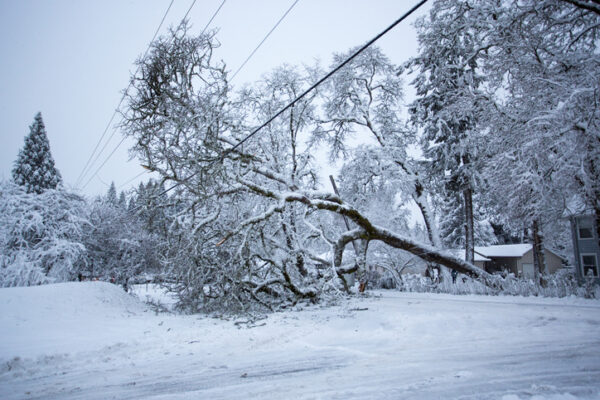The Texas electric grid made it through recent cold snaps with no real problems, despite setting a record for winter demand during one day in January at 78,138 megawatts and needing two conservation appeals. Even though tight grid conditions are typically associated with the summer — the Electric Reliability Council of Texas (ERCOT) issued 11 conservation appeals during the summer of 2023 — several extreme cold events in recent years have highlighted the vulnerability of the grid during winter. Peak winter electricity demand is increasing faster than peak summer demand as more people are replacing gas furnaces with electric heat sources.
One of the keys to maintaining grid reliability is minimizing generation outages during periods of high demand. At the time the winter demand record was set on Jan. 16, about 13,000 MW of generation capacity was offline for maintenance. For comparison, nearly 25,000 MW was offline when the blackouts hit in February 2021. In each case, most of the offline generation capacity was unplanned due to equipment failure in extreme cold or lack of fuel supply.
However, any power generating facility must undergo routine maintenance to keep it running when it is needed. Thermal power plants — those that use coal, gas or nuclear fuels to produce electricity — are complex machines that accounted for 59% of electricity generation for ERCOT in 2023. Because of their importance in the electricity mix, there is a schedule for when these plants can go offline for necessary planned maintenance.
Most of this work takes place during the spring from early March to late May, and during the fall from mid-September to late November — the “shoulder seasons,” when electricity demand has historically been low. But when unexpected heat waves start earlier or linger later in the year during these shoulder seasons, the electricity supply can be stretched thin. For example, unexpectedly hot weather in April 2006 resulted in rolling blackouts in part because so many power plants were offline for scheduled maintenance.
One consequence of global climate change is that spring is arriving sooner in the Northern Hemisphere, and fall-like weather is starting later and later in the year. The frost-free season in some parts of Texas has grown up to three weeks longer since 1950. Since electricity demand in ERCOT tracks with temperature, what will happen to the timing of the shoulder seasons in the future as the planet continues to warm?
We analyzed average daily electricity use in the ERCOT service region to assess how the shoulder seasons have changed over time. From 1959 to 2022, the shoulder season defined by temperature in the spring moved earlier, from early March to early February, and in the fall moved later, from early to mid-November. At the same time, we have the confounding problem of more erratic temperatures during the winter in Texas: Winter weather is becoming milder on average, but often punctuated by arctic blasts.
What do the shifting seasons mean for the future of reliable electricity in Texas? Our projections suggest that by the 2040s, the spring and fall shoulder seasons could merge into a single shoulder season in December and January, effectively limiting the amount of time that power plants can take time to make repairs. Power plant operators might struggle to schedule their preventive maintenance during this window, which could leave us more vulnerable if too many have to take time off at the same time and a deep freeze strikes.
Lawmakers must prioritize encouraging the buildout of diverse energy sources. That way, if thermal generation must go offline for maintenance, less of the overall generation capacity will be affected. Encouraging renewable generation such as wind, solar and geothermal in particular could also help, as these technologies do not need as much extensive maintenance. Industry should consider spreading planned maintenance out over broader stretches of the year, and regulators should work with industry to help optimize maintenance schedules. These measures will help ensure that Texans are not left in the dark, again.
Hugh Daigle is an associate professor and the director of the Center for Subsurface Energy and the Environment at The University of Texas at Austin.
Joshua D. Rhodes is a research scientist at The University of Texas at Austin.
A version of this op-ed appeared in the Austin American-Statesman, Waco Tribune Herald and the San Antonio Express News.




